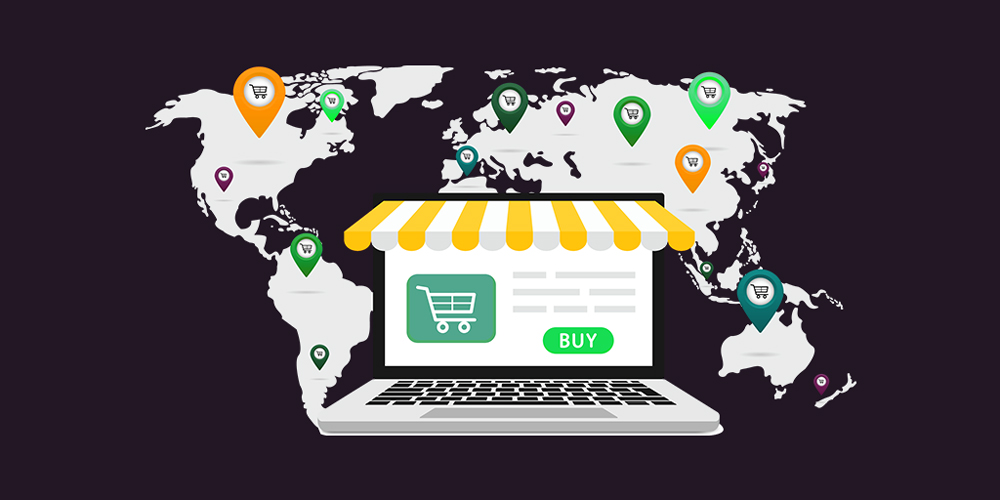预测性国际航运跟踪:人工智能能告诉您交货日期吗?
预测性 国际航运跟踪 正在改变全球电子商务的运作方式。现在,客户不再需要等待和猜测包裹何时到达,而是可以在包裹出库前就看到人工智能驱动的准确送货预测。对于企业来说,这项技术意味着更少的退款请求、更少的投诉和更好的信任。
随着跨境电子商务的发展、 预测性国际航运跟踪 已不仅仅是一种趋势,而是一种业务需要。让我们来探讨一下人工智能如何预测交货时间、其背后的数据,以及如何解决这些问题,例如 邮政包裹 正在塑造国际物流的未来。

1.为什么预测性跟踪在全球电子商务物流中很重要
1.1 客户的期望发生了变化
网上购物者不再接受 "在途中 "这样含糊不清的更新。他们期待精确--确切的日期、实时地图和进度更新。预测跟踪利用人工智能来估计最有可能的交付窗口,从而满足了这些期望。
这对国际交付尤为重要,因为海关、承运商变更和天气延误等变数往往会造成不确定性。通过 预测性国际航运跟踪这样,客户就能了解情况并掌握主动权,从而减少焦虑和购买后的挫败感。
1.2 透明建立信任
信任是每笔成功电子商务交易的基础。当客户被告知货物状态时,他们就不太可能提出争议或要求退款。Postalparcel 的预测跟踪功能可帮助卖家自动提供这种透明度,而无需额外的人工操作。
买家看到的不再是千篇一律的跟踪链接,而是基于以下因素的准确到货预估 实时数据 - 而不是通用的交付范围。
2.人工智能如何预测交货日期
2.1 预测背后的数据
人工智能不是猜测,而是学习。像 Postalparcel 这样的预测跟踪系统利用数百万个数据点来分析和预测投递时间。这些数据点包括
- 来自多家承运商的历史运输数据
- 实时交通和路线状况
- 各地区的通关速度
- 天气模式和季节趋势
- 影响快递业务的当地节假日
通过处理所有这些信息,人工智能模型可以准确预测预期交货日期,通常在实际到达的一两天内就能预测到。
2.2 运动中的机器学习
该系统不断从新的货运中学习。例如,如果运往法国的货物因海关政策变化而开始耗时较长,人工智能模型就会自动调整其预测。这种持续学习可确保未来的客户获得更准确的时间框架。
Postalparcel 的预测跟踪模型在后台持续运行,随着新数据的流入不断改进其投递时间估算。
2.3 个性化预测
每份订单都是独一无二的。从新加坡发往加拿大的货物与发往德国的货物在路线和时间上可能完全不同。人工智能会单独考虑这些变量,为每个包裹量身定制预测,而不是使用平均值。
这种个性化程度可为商家和客户带来更顺畅的体验。

3.商业利益:全球电子商务物流中的人工智能配送预测
3.1 客户咨询减少
电子商务商店最大的痛点之一就是大量的 "我的订单在哪里?通过让客户及时了解情况,预测跟踪大大减少了这些问题。当他们看到一个清晰的、人工智能估算的交付日期时,他们联系支持的可能性就会大大降低。
对于企业来说,这意味着减少了回复单子的时间,将更多的时间用于改善购物体验。
3.2 提高客户满意度
清晰、准确的交货时间表可以建立信心。即使包裹延误,如果客户了解延误原因和何时更新,他们也会更有耐心。像 Postalparcel 这样的预测系统可以自动显示这些信息。
3.3 更好 物流 规划
受益的不仅仅是客户。商家也可以更好地制定计划。了解每个阶段的商品何时到达,有助于管理库存、协调仓库人员配备和优化重新订购。预测跟踪数据甚至可以指导营销活动,例如在新地区达到更快的交付速度时通知客户。
3.4 降低退款和退货率
退款往往是因为不确定,而不是不满意。当客户能看到进度并收到可靠的估价时,他们很少会觉得有必要取消订单。许多 Postalparcel 用户报告说,在激活预测跟踪功能后,退款请求明显减少。
4.邮政包裹在预测性航运中的作用
4.1 跨运营商的实时数据

Postalparcel 的系统不依赖于单一的承运商。它连接多个国际快递公司,将跟踪数据整合到一个统一的视图中。这样,人工智能就能识别跨网络的模式,提高预测的准确性。
例如,如果在 12 月期间,新加坡和洛杉矶之间的某条特定路线的投递时间一直比平均时间长 10%,Postalparcel 的算法就会自动调整所有类似路线的投递估计时间。
4.2 海关和边境透视
最严峻的挑战之一是 全球航运 就是清关。边境上的延误可能会破坏整个时间表。Postalparcel 使用历史海关数据和当前交通更新来计算货物在每个检查站可能花费的时间。
这不仅能让客户看到 其中 他们的包裹是,但也 为什么 花费的时间更长 - 传统跟踪系统无法比拟的详细程度。
4.3 Predictive Delay Alerts
Beyond estimating delivery dates, Postalparcel also sends predictive delay alerts. If the AI model detects a likely disruption — say, weather in Europe or port congestion — it proactively adjusts the estimated delivery date and notifies both merchant and customer.
This turns what could be a negative experience into a transparent, trustworthy interaction.
5. Technology Behind Predictive Tracking
5.1 AI + Big Data + IoT Sensors
邮政包裹 预测性国际航运跟踪 combines artificial intelligence, big data, and IoT sensors for real-time accuracy. IoT-enabled scanners and transport hubs provide location and temperature data, feeding it directly into the algorithm. AI then interprets this data to forecast the next movement or potential delay.
5.2 Data Normalization and Standardization
Because carriers use different systems and formats, Postalparcel’s platform standardizes all incoming data. That means whether the carrier is DHL, SF Express, or a regional courier, all tracking events are aligned into a consistent timeline. This makes prediction and reporting far more accurate.
5.3 Continuous Learning Loop
Every delivery improves the next prediction. The machine-learning model identifies outliers — routes, customs zones, or local carriers that frequently cause unexpected delays — and incorporates those findings into its next forecast.
6. Predictive International Shipping Tracking and the Customer Experience

6.1 Real-Time Communication
Customers today expect constant updates. Postalparcel’s tracking page offers live insights, showing not just “in transit” but estimated arrival windows and current location. When customers see transparency, it builds confidence and strengthens the relationship between brand and buyer.
6.2 The Psychology of Certainty
Studies in e-commerce show that 可预测性 is more important to satisfaction than speed. People would rather know a package will arrive in seven days than be promised “3–7 days” and wait in uncertainty. Predictive tracking eliminates that guessing game by offering a clear forecast.
6.3 Global Accessibility
邮政包裹’s system supports multiple languages and time zones. Customers worldwide can view their tracking updates in local formats and times, making it easier to accurately interpret delivery estimates.
7. Real Business Impact of AI-Powered Shipping Predictions
7.1 Case Study: Apparel Retailer Expansion
A Singapore-based fashion retailer expanded to Europe using Postalparcel’s predictive tracking system. Before implementation, customer inquiries about shipment delays were 42% of total support tickets. After switching to predictive tracking, inquiries dropped by 68%.
At the same time, the company noticed a 15% increase in repeat purchases, demonstrating the significant impact that accurate tracking can have on customer confidence.
7.2 Case Study: Electronics Brand
An electronics brand using international dropshipping faced frequent refund requests due to unpredictable delivery times. After integrating Postalparcel’s 预测性国际航运跟踪, refunds decreased by 37%, and their Trustpilot rating improved within two months.
These examples show the direct ROI predictive tracking can bring — fewer issues, happier customers, and more sales.
结论
预测性国际航运跟踪 powered by AI isn’t science fiction — it’s the new standard for global e-commerce. By turning complex logistics data into clear delivery predictions, businesses gain control, customers gain confidence, and operations become smoother.
Postalparcel’s predictive tracking solution combines intelligence, transparency, and real-time insight to redefine cross-border delivery. It answers the question, “Can AI tell you the delivery date?” — with a confident yes.
It doesn’t just predict arrival times. It predicts satisfaction.
行业洞察
收件箱消息
Nulla turp dis cursus.整体释放,预留空间








